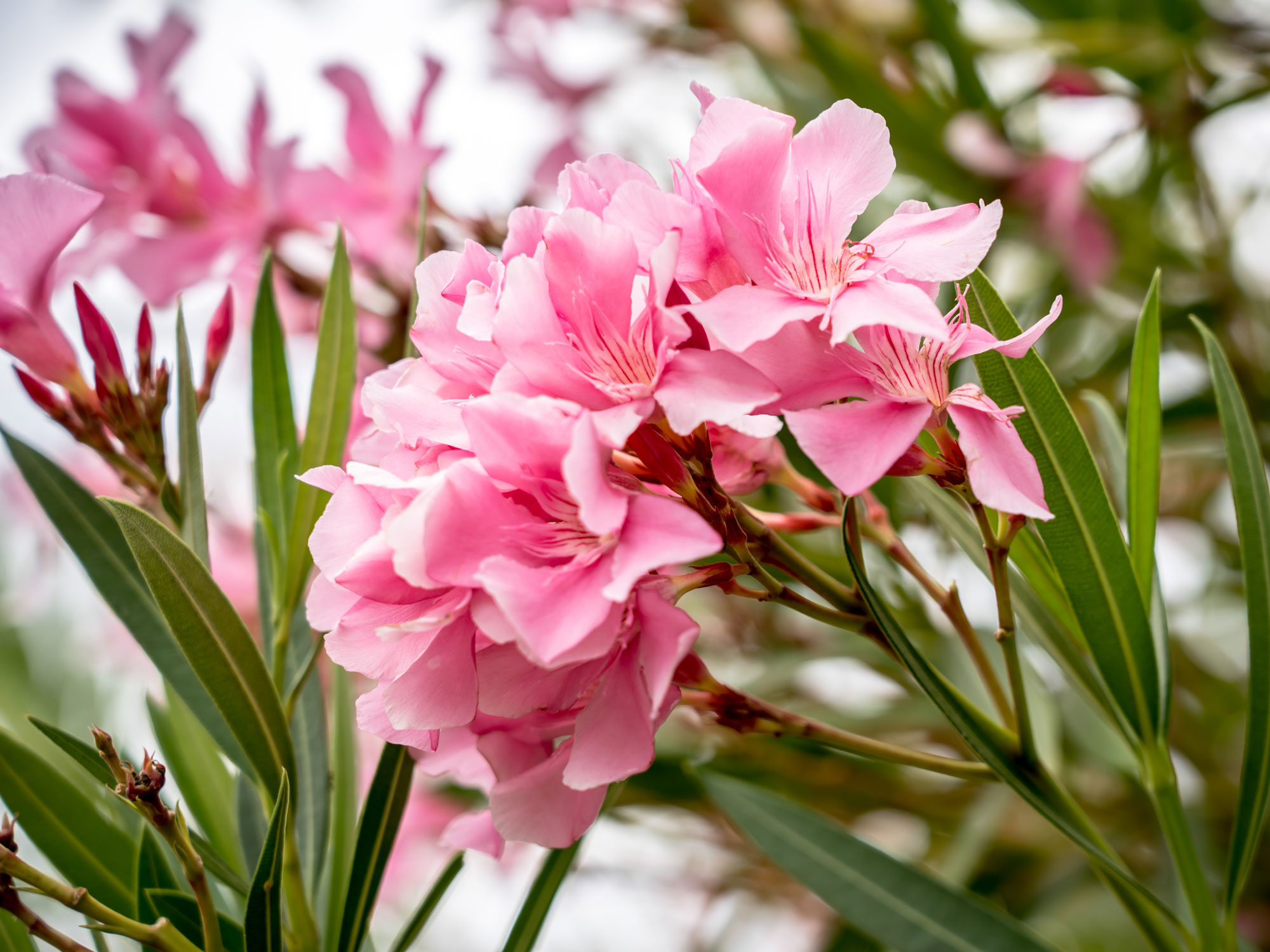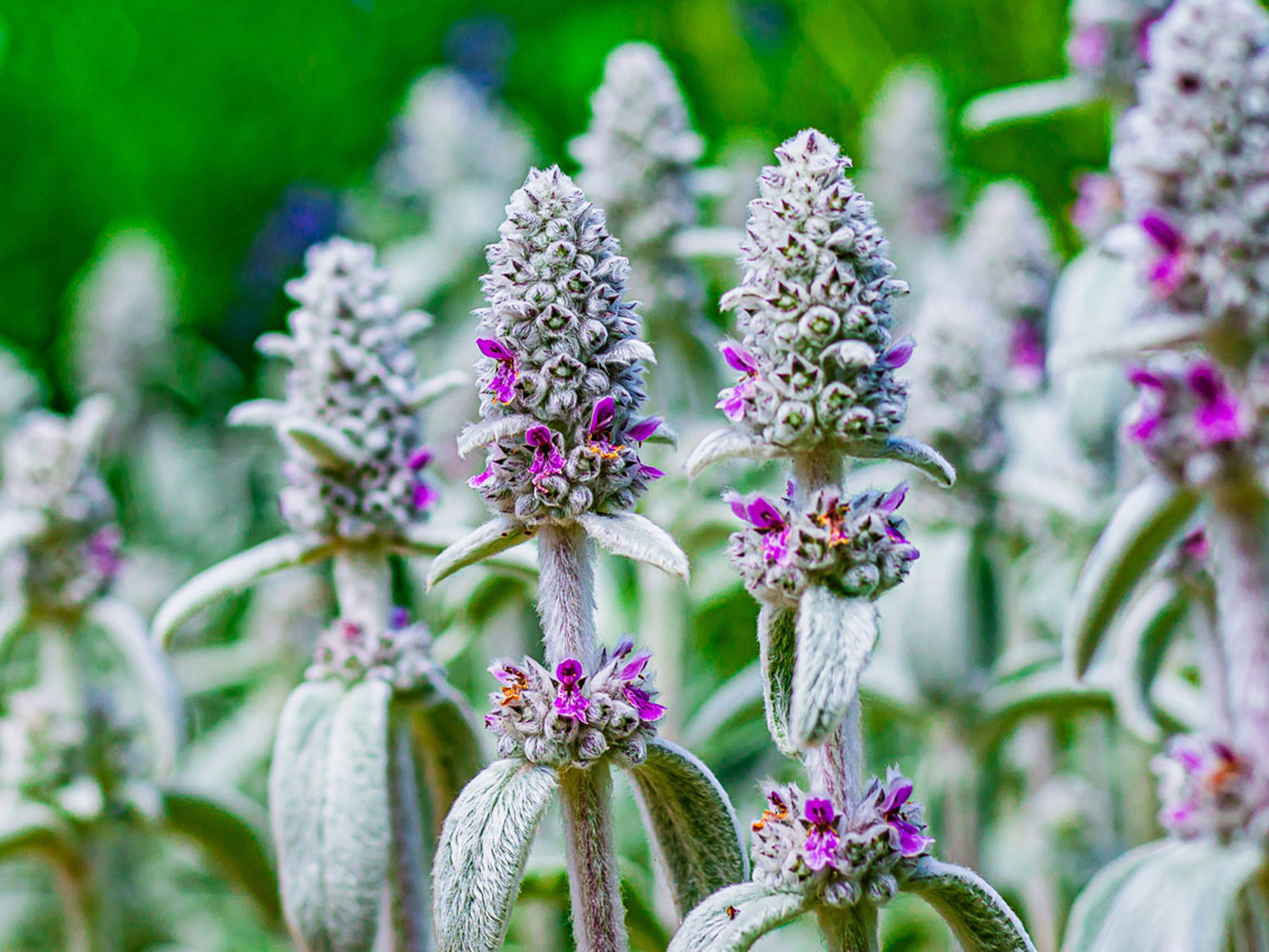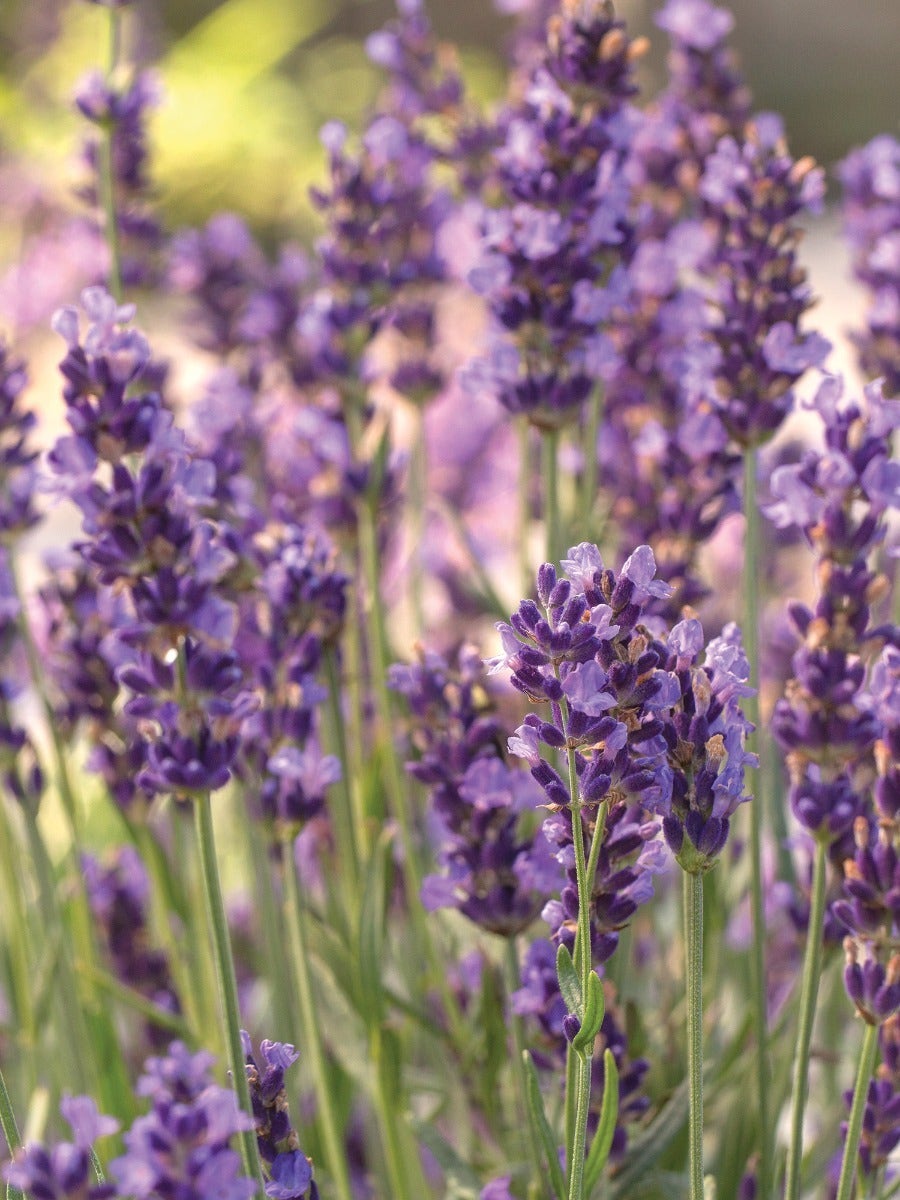9 Mediterranean Garden Plants Landscape Designers Always Choose to Give a Backyard a Vacation Vibe
The easy good looks and soothing scent of these sun-loving Mediterranean garden plants will make you dream of faraway places

There's something very special about Mediterranean garden plants. They will add soft drifts of color and texture to your planting design that's so reminiscent of the sunbaked gardens of holiday villas and bijou rentals.
A muted color palette of soft gray, sage green, mauve, blue and silver creates a painterly effect, with bright splashes of color used here and there as a punctuation mark in the planting.
Mediterranean garden plants tend to be easy to grow too. They're tough and drought-tolerant, and don't need a lot of attention. They do well in poor soil, while many of them can be planted straight into gravel too. The one thing they do need is a hot and sunny position if they’re going to thrive.
By choosing the right plants, you can easily bring a touch of the Mediterranean to your modern garden. Take into account your own climate to help you decide which plants will best suit your garden. Remember you can achieve a lot by positioning plants in a sheltered sunny spot in an enclosed town garden, or by planting them in containers you can cosset over winter.

Mediterranean garden plants: how to get the look
'For a Mediterranean garden that transports your backyard to a vacation paradise, think about incorporating plants with cool tones and interesting textures,' says New Jersey based Laura Janney, gardening expert, botanical stylist, and founder of The Inspired Garden.
'Consider the impact of foliage as much as blooms. A plant doesn't need to flower to hold a special place in your garden. Imagine the serene glow of the sunlight reflecting off the silver leaves of an olive tree, reminiscent of a seaside escape.'
Embrace a natural and free-flowing Mediterranean garden style. Mix ornamental grasses with blooming perennials and incorporate elements that add movement to your garden, enhancing the feeling of a windswept coastal retreat.
The Livingetc newsletters are your inside source for what’s shaping interiors now - and what’s next. Discover trend forecasts, smart style ideas, and curated shopping inspiration that brings design to life. Subscribe today and stay ahead of the curve.
For container gardening, Laura suggests opting for light-colored or "vintage" containers that appear weathered by sea salt. These softer hues will draw the eye gently around your space, creating a calming effect.

Mediterranean fan palm tree in a vintage pot
Which garden plants will make my backyard feel Mediterranean?
If you love the idea of bringing a touch of vacation vibe to your outdoor space with Mediterranean garden plants now find out which favorite varieties made it onto our expert plant list.
1. Santolina

Also known as rosemary-leaved lavender cotton, this aromatic evergreen shrub with feathery foliage is covered with small yellow flowers all summer long. It's easy to grow in containers, gravel gardens and borders. It's one of the best plants for dry gardens too.
'These are classic plants for dry soils in a sunny location,' says Jenny Rose Carey, plant expert and author of The Ultimate Flower Gardener's Guide. 'Choose from silvery-leaved Santolina chamaecyparissus, or the green-leaved Santolina rosmarinifolia. Both plants have cute yellow button-shaped flowers in summer. The leaves are an important evergreen addition to a flower bed too.'
2. Lavender

'A Mediterranean garden plant that can instantly transport you with a holiday vibe is lavender,' says Andy Tait, plant expert at True Green Nursery. 'Lavender not only adds a pop of color to your backyard with its vibrant purple flowers but it also fills the air with its distinctive, soothing fragrance that's reminiscent of Mediterranean gardens.'
The slender stems of lavender are topped with clusters of tiny purple flowers that add a touch of elegance and beauty to any garden. The scent is calming, often associated with relaxation and tranquility, which makes it perfect for creating a vacation vibe in your backyard.
If you're wondering where to plant lavender, it is a hardy plant that thrives in warm, sunny climates with well-drained soil. Once established, it requires minimal maintenance. It can be grown in various ways, including as a border plant, in containers, or even as a low hedge.
3. Echium

This sun-lover prefers a baked location in a southern climate. Also known as bugloss, echium hails from the Mediterranean. It can be the hottest, driest summer yet still they won't need watering and continue to look good for months. The giant ornamental spikes can grow to 5 feet or more, and will add interesting vertical lines to your Mediterranean planting ideas.
The flowers come in a lovely range of colors including pale mauve, purple, pink, burgundy and blue. Once blooms have faded shake the seeds around the garden and you'll get more plants next year.
Bees and butterflies love them too. 'The bold flower spikes of echium always seem to be hosting the best pollinator party around,' says horticulturalist Jac Semmler, author of Super Bloom. 'The prominent spikes are covered with flowers that call loudly to any bees in the neighborhood. On a sunny day the plants hum from the proliferation of bees.'
4. Oleander

Oleanders are a highlight of Mediterranean gardens that are seen everywhere in their native habitat. They are often planted in groups for screening boundaries as they're fast growing. If you cultivate them as a multi-stemmed shrub they can grow up to 8 feet, while if you prefer the look of a single stemmed tree they can grow up to 20 feet.
A row of them are often used to frame entrances and driveways, as well as planted up in containers to add an ornamental flowering shrub to sunny courtyards and patios.
Flowering year round if you live in a mild climate, they come in a range of colors including pink and red, and many are fragrant. The long and slender evergreen leaves are a plus too. They do best in a sheltered spot that gets plenty of sunshine. They need mild temperatures in winter if they are going to survive or otherwise must be taken indoors.
5. Globe thistle

Also known as Echinops, this architecturally striking plant works best in a gravel landscaping or sunny border among other Mediterranean plants that also love parched conditions. The striking ball-shaped flowers are perfectly round and spiky, and make a striking addition to a flowerbed.
'Each individual spike produces petite flowers at the end of each point, adding texture around the globe. The orbs take on a luminescence in the early morning and late evening light,' says Jac Semmler. 'Cultivars can be found with flowers that range from silver to bright blue.' The seedheads fade to silver and gray as they age.
Look out for the stunning variety 'Veitch's Blue', which is ideal for the middle or back of a sunny, well-drained border, and will attract hordes of pollinators.
6. Yarrow

Yarrows are a great choice of Mediterranean plant as they are reliable, drought-tolerant perennials that thrive in sunny areas with soils that drain well. 'They are classic plants that add flat-topped, plate-shaped flowers to the late spring through summer garden,' says Jenny Rose Carey.
These long-flowering perennials (also known as Achillea) are the stars of naturalistic planting designs, adding a textured look and strong horizontal lines in contrast to spiky flowers. They are a magnet for butterflies and bees too.
They are more commonly found in shades of yellow such as Achillea ‘Taygetea’ but you can also get cream, terracotta, bronze and our favorite pink varieties such as 'Firefly Amethyst' and 'Pretty Belinda'.
7. Rosemary

This aromatic, sun-loving Mediterranean herb has a lovely woody fragrance that is a fantastic addition to any garden planting scheme. The scented foliage and flowers release aromatic oils into the air on a sunny day for a delightful treat when you walk nearby or sit close to them. It has beneficial calming effects too.
Choose a sunny, sheltered spot for your herb garden and make sure the soil is gritty and free draining to get the best results with your rosemary.
Mix in other aromatic herbs too. 'Herbal plants for scent and taste are one of my special passions, as they add so much to a flower garden,' says Jenny Rose Carey. 'I love to grow English thyme, rosemary and sage.'
Rosemary has recently been reclassified as Salvia rosmarinus. Salvia is another favorite group of Mediterranean garden plants that are well worth including in your planting scheme.
8. Jerusalem sage

Also known as Phlomis, this evergreen plant is perfectly adapted to thrive in Mediterranean gardens and will be the star of the show in midsummer. The soft leaves are pale gray-green and the eye-catching yellow flowers bloom from summer to fall, making it a stalwart of your planting scheme.
Jerusalem sage needs full sun and will thrive even in the hottest part of summer. Drought tolerant and flourishing in poor soil, the way to grow Jerusalem sage is to imitate its native Mediterranean climate. It's also a good choice for dry gardens, and the tall flowers attract bees, butterflies, and hummingbirds.
Try combining it with other Mediterranean garden plants that have similar requirements, such as lavender and salvia, in a well-drained bed, where it will grow up to 4 feet tall.
9. Lamb's ears

These lovely herbaceous perennials add a soft, naturalistic feel to Mediterranean-style planting with their waves of velvety gray-green leaves, while the tall spikes of pink-purple flowers look delightful moving gently in a summer breeze.
Also known by the name Stachys byzantina, lamb's ears are a good choice for dry gardens too, as well as being excellent plants for pollinators. They will repeat flower right through summer, and look fabulous combined with other Mediterranean plants with silver foliage such as lavender and yarrow, or woven in between taller plants like Nepeta or Verbena bonariensis.
These silvery leaf plants for gardens also looks stunning planted around bright flower blooms to form a soft backdrop. Gray has the effect of 'muting' colorful plants and is often the calming factor among them.
Lamb’s ears grow best in a position with full sun to partial shade, with at least 6 hours of sunlight every day. They grow vigorously, so if you want to limit their spread remove the flower stalks before they go to seed. Or not! Part of the real joy of Mediterranean garden plants is their ability to spread into the signature natural drifts that encapsulate the look.
Lifestyle journalist Sarah Wilson writes about garden design and landscaping trends. She has studied introductory garden and landscape design, and also has an RHS Level 2 qualification in the Principles of Plant Growth and Development. She is a regular contributor to Livingetc.com, and also writes for Homes & Gardens, Country Living, Country Homes & Interiors, and Modern Gardens magazines. Her first job was at Elle magazine, during which time a trip to the beautiful La Colombe d'Or in St-Paul-de-Vence led to an interest in writing about all things botanical. Later as lifestyle editor at Country Homes & Interiors magazine one of the highlights were the run of captivating country gardens that were featured.




